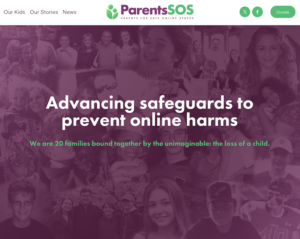Includes “8 System Initiatives to Enhance Child Development and Learning”
As a pediatric OT, I have ongoing opportunities to observe and provide recommendations for interventions for children in a variety of environments. Providing assessments and educational workshops in homes, daycare/preschools, schools, child development centres, and clinic settings, have provided me with rich and diverse information about the systems that surround, interact and influence individual children. What I’ve witness over the past 25 years is an astounding change in how parents, teachers, and communities nourish, raise and educate children. Gone are the “free range” ideas of the past, where children would be allowed to walk to school, bike to the park, and go to friend’s homes without parents constantly obsessing about whether they were safe. Gone is exploration in Mother Nature, along with all of her calming and restorative effects. Gone are focused instruction in the 3 R’s, gym time, and cool playgrounds, impacting on academic achievement literacy. Gone are chores, clear expectations, down time, and just hanging out with friends and family. While imagination and creativity stem from times of absence, children today are incessantly handed technology as a form of entertainment with dubious learning. These devices not only isolate very young children from their pack, causing attachment disorders, but also provide them with a hyper stream of fast paced and violent stimulation which is often mindless and meaningless. When these individual children exhibit behaviors I’ve come to term sad, mad and bad, the aforementioned systems diagnose these behaviors as child mental illness and medicate them. Growing trends for society’s health, education, and family systems are to condemn their youngest and most vulnerable children to a virtual world devoid of human connection and interaction, and then when the child’s suffering becomes glaringly apparent, point the finger at the child as the source of the problem. The turning point will be when society realizes the enormity of issues associated with profound technology overuse, and systems start to act together to change how they address child and family mental health problems.
A review of the impact areas of technology overuse by children and families, will highlight the need to act immediately to address problems associated with this growing trend. Technology impact research can be located on the Zone’in website Fact Sheet, with proposed intervention “10 reasons to ban handheld devices for children under the age of 12 years” located on Huffington Post. Additional proposed technology reduction initiatives can be located on the Zone’in website and Moving to Learn blog.
Reflecting over the past decade of working in multiple systems, has brought incredible insight into what society needs to enact in order to reverse the trend toward escalating technology overuse and consequent child neglect. Government grants and private contracts have supported my clinical, educational, training, and consultation services in a variety of settings both local and global, enabling me to trial an ongoing evolution of solutions to address issues associated with technology overuse. Going into family homes and educating parents and children on symptoms related to technology overuse resulted in insight and slight technology reduction, but is not affordable considering 3 out of 5 families have probable technology addictions (39% of parents use over 11 hours per day of entertainment technology). Providing researched evidenced information and technology reduction strategies to the health, education, and social systems that work with children while cost effective and expedient, has not to date resulted in significant action plans to reverse the enormity of technologies negative effects on children and families. Community interventions designed to enhance playgrounds and recreational opportunities for families to entice them off technology into nature play spaces, while proposed and adopted, were difficult to bring to completion due to lack of capital funding and operating infrastructure. I must say, at this point in time, I am completely flummoxed as to how to reverse this trend of increasing technology overuse, and stop the damage it inflicts on young children.
Recent work in small communities has resulted in the formation of tripartite teams comprised of members from various health, education, and social government systems coming together to determine a variety of possible system changes and interventions that would address problematic child behavior. Some of the results stemming from these team based meetings were consolidated into unified intervention plans, and were targeted toward initiatives that would enhance child development and learning, as opposed to targeting technology reduction. This type of intervention for technology overuse follows a concept I designed some time back termed Balanced Technology Management, where adults manage balance between healthy activity and technology. If the focus shifts to increased access to activity that promote health, automatically technology usage is reduced, as less time is available for unhealthy activity. Easy said, not so easy to accomplish. The following 8 tripartite team-based system initiatives will serve as bench mark ideas and goals for child health, education, and family teams to work towards as they negotiate technology overuse landmines already here, and yet to come in the future.
8 System Initiatives to Enhance Child Development and Learning
- Technology Usage Screening – to be employed on a routine basis by therapists, physicians, school/daycare/preschool teachers, social workers, counsellors etc.
- Media Awareness Programs – yearly Tech Unplug Week consisting of education, tech reduction strategies, and engagement in community programs which promote healthy activities.
- Playground Enhancement – establish play space and equipment in daycares/preschools, schools and community settings to include 7-18 year olds and parents, which challenge physical, mental, and social aspects. Equipment might include obstacle course, Barstarzz, skateboard park, benches/picnic tables, fire pits, and HealthBeat equipment .
- Outdoor After-School Care and Summer Programs – run by youth, supervised by health, education, and social service workers.
- Teach Printing – while children continue to use pencil/paper for spelling, math, short answer socials, science etc, teachers have stopped teaching children to print as evidenced by 4-5 year delays in printing output speeds. Literacy rates are declining (PISA scores 2013). See Move’in Program for additional information on improving printing output speeds.
- Provide Space and Equipment for Self-Regulation – use of sensorimotor tools and techniques in classrooms and gyms that stimulate tactile (Body Sock, weighted bean bags), proprioceptive (slam ball, TRX, rings, exercise bike), and vestibular systems (Hokki Chair, Move-N-Sit cushions, suspended swings), improve self-regulation, as do provision of sensory deprivation areas. See Zone’in Program for additional information on improving self-regulation.
- Parent Coaching – Ten Steps Triple P – Positive Parenting Program includes 10 one minute video clips, and Strongest Families is an online family support for problematic child behavior .
- Technology Reduction – after implementation of all of above, maybe we can get down to the not so favored task of implementing technology reduction initiatives. While obvious, child and family technology addiction is not recognized in North America, and consequently, treatment centres are scarce. Viewing technology addiction centres for children and youth in China, South Korea, and Portugal might assist NA in planning for the future. Restriction of online pornography (England, Scotland, Iceland), and turning off the internet at night (Portugal), are likely to be our future as well. See Unplug’in Program for additional information on improving child skills and confidence in activities alternate to technology.
Cris Rowan is an impassioned pediatric occupational therapist, biologist, speaker, and author of “Virtual Child – The terrifying truth about what technology is doing to children”. Cris can be reached at info@zonein.ca.





